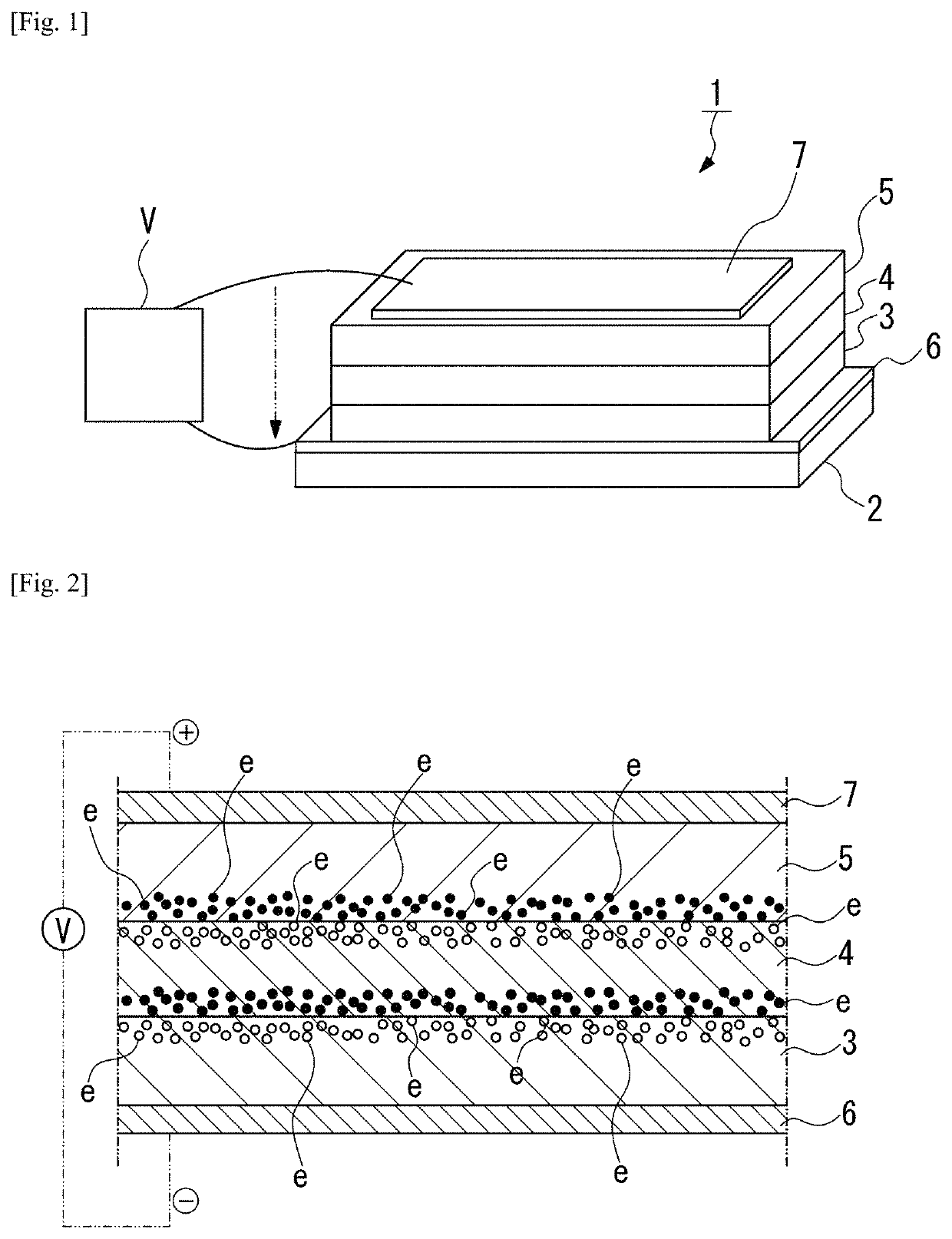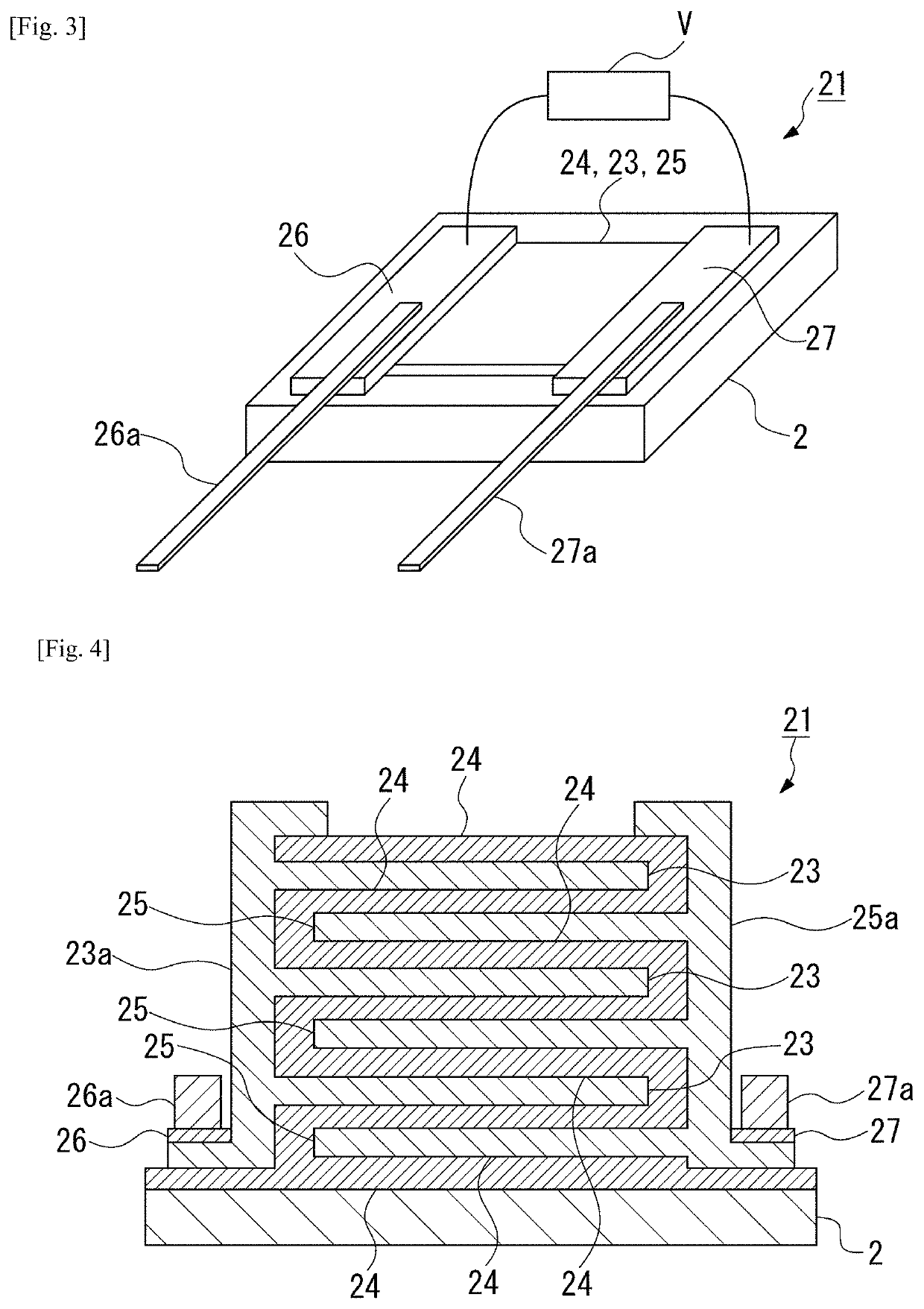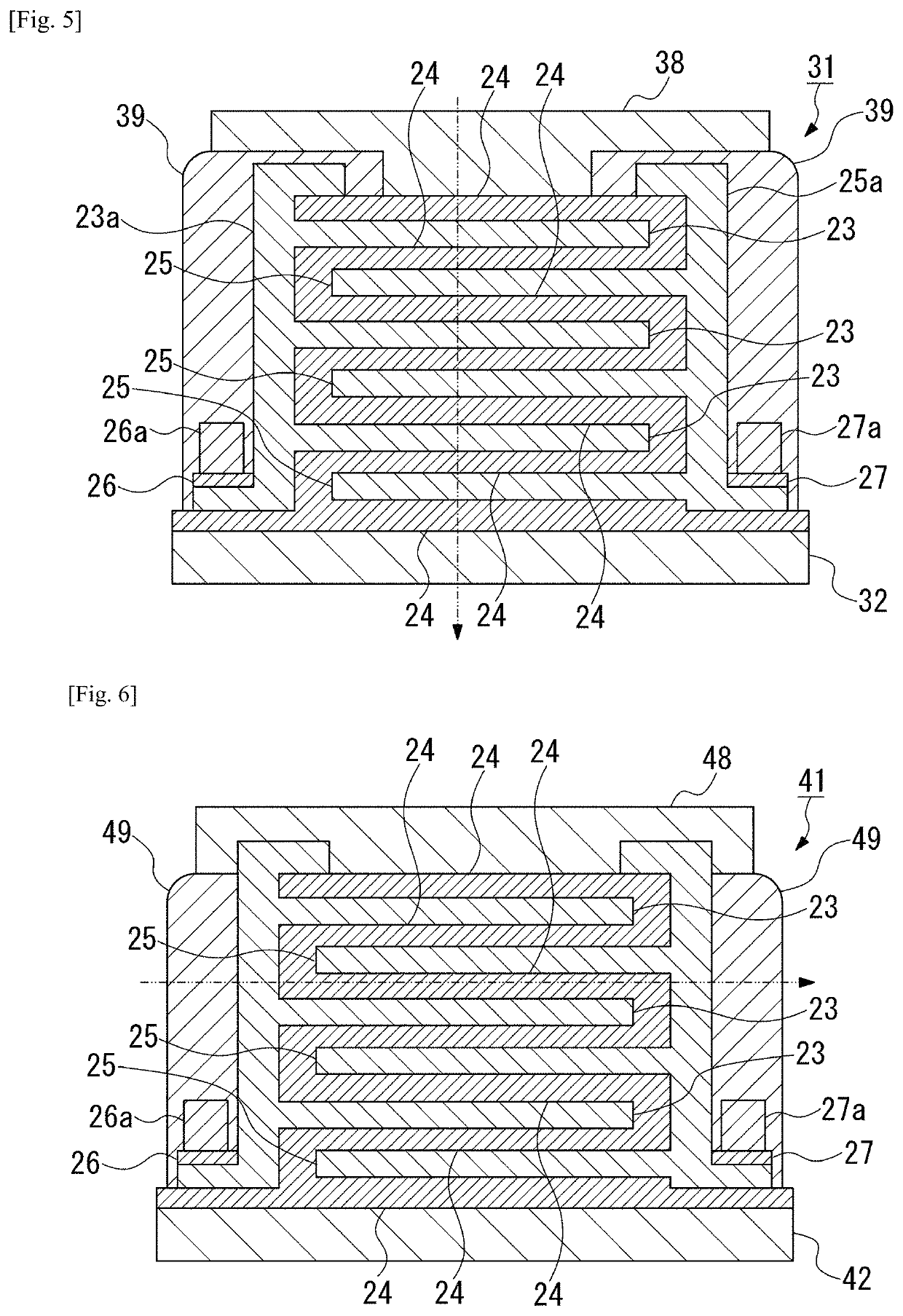Heat flow switching element
a switching element and heat flow technology, applied in the direction of electrical equipment, semiconductor devices, semiconductor/solid-state device details, etc., can solve the problems of large influence of convective heat transfer between materials, difficult design a size, and inability to avoid plastic deformation, etc., to achieve large change in thermal conductivity and high thermal responsiveness
- Summary
- Abstract
- Description
- Claims
- Application Information
AI Technical Summary
Benefits of technology
Problems solved by technology
Method used
Image
Examples
example 1
[0094]An insulator layer, a P-type semiconductor layer, and a P-side electrode were laminated on an N-type semiconductor layer using the following materials to form Example 1 of the present invention, and a change in the thermal conductivity was measured.
[0095]N-type semiconductor layer: Si substrate of N-type semiconductor (thickness of 0.5 mm)
[0096]Insulator layer: SiO2 (thickness of 100 nm)
[0097]P-type semiconductor layer: Si0.375Ge0.575Au0.05 (thickness of 40 nm)
[0098]P-side electrode: Mo (thickness of 100 nm)
[0099]It has been confirmed that each of SiO2 (thickness of 100 nm) and Si0.375Ge0.575Au0.05 (thickness of 40 nm) has a thermal conductivity of less than 2 W / mK in a single film.
[0100]Further, SiO2 (thickness of 100 nm) was formed by an RF sputtering method, and Si0.375Ge0.575Au0.05 (thickness of 40 nm) was formed by an MBE method.
[0101]An Au wire was connected to the Si substrate of the N-type semiconductor and Mo of the P-side electrode, and a voltage was applied. Further...
example 2
[0104]An N-type semiconductor layer, an insulator layer, a P-type semiconductor layer, and a P-side electrode were laminated on a substrate using the following materials to form Example 2 of the present invention, and a change in the thermal conductivity was measured.
[0105]Substrate: glass substrate (thickness of 0.5 mm)
[0106]N-type semiconductor layer: Si0.36Ge0.56P0.08 (thickness of 40 nm)
[0107]Insulator layer: SiO2 (thickness of 30 nm)
[0108]P-type semiconductor layer: Si0.375Ge0.575Au0.05 (thickness of 20 nm)
[0109]P-side electrode: Mo (thickness of 100 nm)
[0110]It has been confirmed that each of Si0.36Ge0.56P0.08 (thickness of 40 nm), SiO2 (thickness of 30 nm) and Si0.375Ge0.575Au0.05 (thickness of 20 nm) has a thermal conductivity of less than 2 W / mK in a single film.
[0111]Further, SiO2 (thickness of 30 nm) was formed by an RF sputtering method, and Si0.36Ge0.56P0.08 (thickness of 40 nm) and Si0.375Ge0.575Au0.05 (thickness of 20 nm) were formed by an MBE method.
[0112]An Au wire ...
PUM
| Property | Measurement | Unit |
|---|---|---|
| thickness | aaaaa | aaaaa |
| thickness | aaaaa | aaaaa |
| thickness | aaaaa | aaaaa |
Abstract
Description
Claims
Application Information
 Login to View More
Login to View More - R&D
- Intellectual Property
- Life Sciences
- Materials
- Tech Scout
- Unparalleled Data Quality
- Higher Quality Content
- 60% Fewer Hallucinations
Browse by: Latest US Patents, China's latest patents, Technical Efficacy Thesaurus, Application Domain, Technology Topic, Popular Technical Reports.
© 2025 PatSnap. All rights reserved.Legal|Privacy policy|Modern Slavery Act Transparency Statement|Sitemap|About US| Contact US: help@patsnap.com



